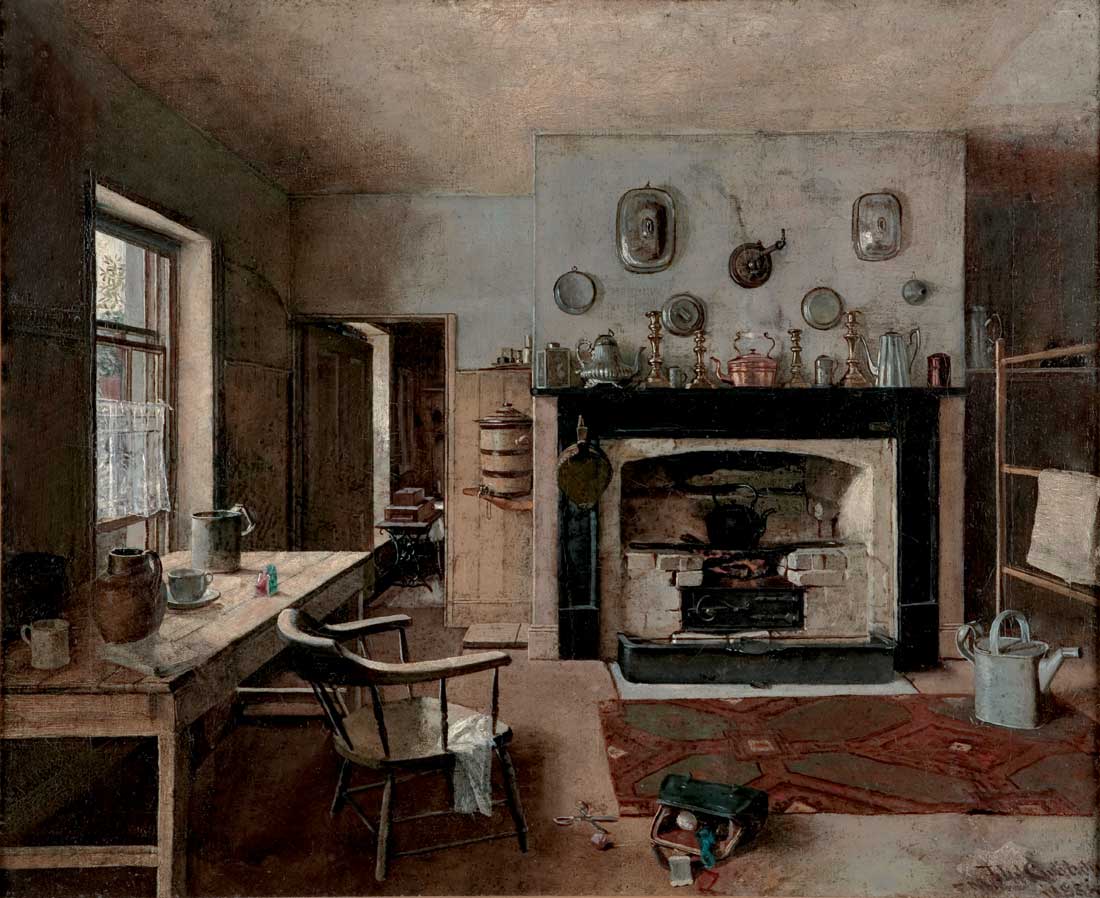Description
This is an oil painting on canvas (50.6 cm x 61.2 cm) showing the kitchen area of the family home in which the artist, Frederick McCubbin, (1855-1917) was born. It is a functional space, as evidenced by the kettle set on a glowing fire; a teacup and saucer on a wooden table next to a chair; and various utensils including pots, pans, jugs, clothes, candlesticks and a drying rack. A glimpse of a small yard can be seen through the lace curtain of the kitchen window, while the open door that leads to an adjoining room shows a sewing machine next to a window. The overturned sewing basket in the foreground suggests that someone has just hurriedly left the room.
Educational value
- This asset provides an insight into the early style and development of an artist who was a key figure in the Heidelberg School of landscape painting and who is known nationally for his depictions of pioneering life in the bush.
- It incorporates strong narrative elements, a significant feature of the artist's later work, as seen in the major works 'The pioneer' (1904) and ‘On the wallaby track’ (1896) - the empty chair and the sewing basket with its contents spilling onto the floor are clues that McCubbin's audience would have known how to piece the elements together to build a story.
- It shows the influence of 17th-century paintings of interiors by Dutch painters on Australian art of this period, particularly in the use of light-to-dark tones and the inclusion of doorways and windows as visual devices to lead the eye around the composition.
- It provides a very detailed depiction of part of the domestic interior of a small family business in late 19th-century Australia - the house was attached to the family bakery.
- It documents a 'woman's space' (used by the artist's mother) and gives an insight into the roles and responsibilities of women in the home in this period.
- It contains references to a diversity of work skills (cooking, sewing, washing) and technologies (lighting, heating, water supply) associated with domestic management at the time.
- It shows how working-class families used decorative items (the painted canvas floor covering, the lace curtain and ornamental teapot) and arrangements of utensils (those above the fireplace) to add personality to functional interiors.
